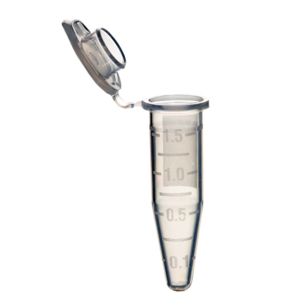Pests are organisms that interfere with human activities, damage property, or pose a health threat. The goal of pest control is to reduce their numbers to an acceptable level with as little harm as possible to people, animals, plants, and things of value.
The first step is correct identification. Other steps include prevention, suppression, and eradication. Contact Pest Control Quincy now!

The first step in developing an effective pest control strategy is accurately identifying the pest. Incorrect identification may lead to costly or useless control measures that can actually worsen the problem.
The different pest species vary in their life cycle, behavior and preferred food sources. A knowledge of these differences allows the pest management specialist to discover the pest’s weaknesses and develop an appropriate control strategy. Pest identification also enables the pest control specialist to determine basic information about the pest, such as its physical characteristics and environmental conditions that affect its development and population.
A number of techniques can be used to identify pests, and each requires a certain amount of skill and training. For example, plant disease organisms can be spotted by looking for certain symptoms on the plants in a field. Pests that damage crops typically have specific chewing or sucking mouthparts. For instance, the caterpillars of many butterflies and moths and the larval stages of several beetles destroy leaves, fruit or roots, while plant bugs pierce the plant tissue, sucking out the sap.
Identifying pests is especially important when it comes to Integrated Pest Management (IPM) strategies. These strategies are designed to use natural methods of controlling pests before they become a serious problem and do not involve the use of chemicals.
IPM strategies are based on the idea that pests can be managed at all stages of their life, from egg to adult. These strategies are generally more environmentally friendly and less costly than chemical treatments. They are often more successful at controlling pests and can prevent them from becoming resistant to the chemicals used to kill them.
One of the most important parts of IPM is “field scouting” which involves monitoring the pest population and crop progress. To be most successful, the scouting must be done in a way that is representative of the whole field. This means entering the field from a number of different points, and sampling each area. Identifying the location where pests tend to congregate can help control the pest population by focusing pesticide applications on this area.
Pest Prevention
Pests pose many risks to communities, including health hazards and structural damage. Rodents like cockroaches and mice carry bacteria that cause foodborne illnesses, can gnaw through wires and wood causing fires, and affect indoor air quality, triggering asthma and allergies in children and adults. Cockroaches and rodent droppings can also contaminate food. Pests are a nuisance that disrupt our daily routines and can cause psychological stress.
A pest prevention program helps to eliminate the need for pest control in the first place. Unlike reactive pest control methods, preventive pest management includes regular inspections of facilities by trained staff, targeted treatments inside and outside of buildings, and specific enhancements to prevent entry of pests. It also focuses on sanitation and maintenance, such as preventing food from becoming spoiled or stored in improper conditions and locating dumpsters away from building entrances.
An effective pest prevention program can take some time to establish, but once in place it provides long-term benefits. It can lower a company’s risk profile and help it to meet or exceed the requirements of the FSMA. It can also help facility, property and QA managers avoid costly product recalls or having their products rejected by customers due to pest problems.
Prevention begins with an initial inspection of a facility by a trained technician, who will identify entry points and areas where pests are most likely to gather. Based on this information, a customized treatment plan will be created. Treatments may include a variety of options such as baiting, spraying, or trapping.
The most important part of pest prevention is good housekeeping and sanitation. This includes keeping waste bins tightly closed, taking out trash regularly and properly, and storing food in containers with tight lids. It’s also important to keep windows and doors shut as much as possible, and use caulking or weather stripping to seal any gaps and cracks. Door sweeps and dehumidifiers can be used to help keep wet areas dry.
It’s also a good idea to understand pest life cycles, as some interventions can only be effective at certain stages of development. Knowing the lifespan and life cycle of a pest will help you to better predict when they might be invading your home or workplace. This will help you to decide whether or not the pest is a nuisance and needs to be controlled, or if it can be tolerated.
Pest Suppression
Pests can cause economic or aesthetic damage to crops, landscapes, buildings and home gardens. The goal of pest control is to prevent or reduce damage. This is often achieved by a combination of approaches. Preventive controls aim to deny pests the food, water or shelter they need.
Scouting and monitoring allow the detection of pests, and help determine when control is necessary. Monitoring can also indicate whether a particular prevention technique is working or not.
Cultural controls include practices that reduce pest establishment, reproduction, dispersal or survival. These include crop rotation, soil cultivation techniques, and changing irrigation practices. Adding or removing habitat can also decrease pest populations. For example, removing fallen fruit from around trees can discourage birds that are important predators of plum curculio beetles and other caterpillars. Removing overwintering debris or weeds can decrease aphid, caterpillar and other pest numbers.
Biological control uses natural enemies-predators, parasitoids, disease organisms, and competitors-to reduce pest populations and their damage. These can be introduced from the wild, or bred in the laboratory and then released. Examples of biological control agents include viruses, bacteria, fungi and nematodes. These organisms usually target one or more specific pest species, and so are unlikely to harm humans, animals, beneficial insects, or plants.
Chemical control includes the use of products that kill or inhibit a pest’s growth, feeding, mating, or other essential behavior. Chemicals can be natural products or synthetic compounds. Examples of chemicals used to control pests are herbicides, insecticides, and pheromones.
Eradication is the most difficult goal to achieve in outdoor pest situations. However, in enclosed environments such as greenhouses, or homes and commercial buildings, eradication may be possible using exclusion, quarantine, repulsion, physical removal or sterilisation programmes.
To successfully control a pest, it is important to understand its life cycle and behaviour. This will allow you to choose the most appropriate control measures. The key is to recognise that controlling a pest requires a balance between prevention, suppression and, if necessary, eradication. Prevention is the most cost-effective approach. Suppression is reducing the number of pests to an acceptable level. And if eradication is required, it should only be done when all other alternatives are considered to be unacceptable.
Pesticides
Pesticides are chemicals that kill pests, such as insects, weeds, mildew and rodents. They are used to protect crops, food and other plants, as well as people and pets. They are available in a variety of forms, and they can be found in many household products. Some are natural, and some are synthetic. The Environmental Protection Agency (EPA) regulates pesticides in the United States. EPA’s activities include research, grant programs, monitoring of environmental conditions, enforcing regulations and public education.
Pesticide use is most effective in combination with other pest control methods. These may include routine scouting, physical barriers such as netting and planting resistant varieties. Some of these techniques are referred to as integrated pest management (IPM).
A wide range of pesticides exist. Some are biodegradable, which means that microbes and other living things can break them down into harmless compounds. Others are persistent, which means they don’t break down quickly or can accumulate in the environment. The type of pesticide used also makes a difference. For example, organophosphates are less persistent than other insecticides, but they are also more toxic to people and animals.
Insecticides can be incorporated into the soil to control grubs and worms, or applied directly to plant foliage to kill moths and other above-ground pests. Fungicides are also used to control fungi. There are even a few antimicrobial pesticides, which are mainly used by poultry companies to disinfect their facilities and prevent the spread of avian flu.
The primary advantage of pesticides is that they can save farmers by controlling unwanted organisms that might otherwise damage or degrade crops and disrupt the food supply. A secondary advantage is that they can provide more consistent yields than manual or mechanical methods.
It is important to remember, however, that pesticides are not without risks. Some of these risks can be short-term, such as headaches or nausea. Others are more chronic and can cause cancers, reproductive harm and neurological problems. People should always read labels and follow all directions when applying pesticides, especially around children and pets. They should also try to avoid using them when they don’t really need them.








